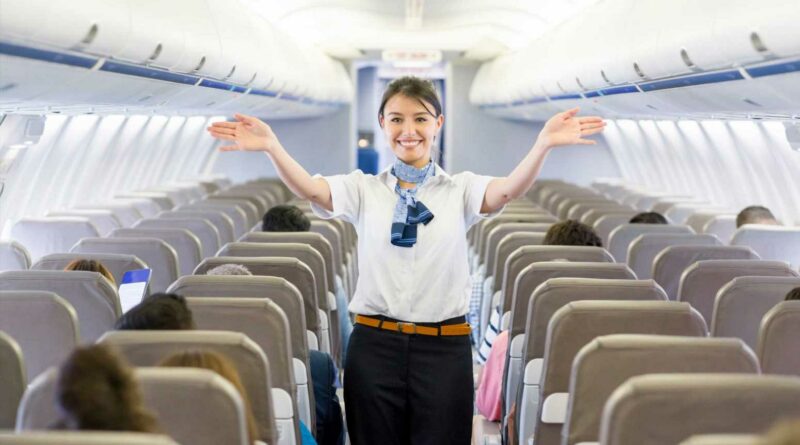Why do flight attendants sit on their hands? | The Sun
FLIGHT attendants have many guidelines that they need to follow to ensure the safety and comfort of their passengers.
One of the more unusual customs that travellers have noticed across various airlines is flight attendants sitting their hands during certain parts of flights.
Why do flight attendants sit on their hands?
Passengers on flights may have noticed flight attendants sitting on their hands during taxi, take-off and landing.
This position is also sometimes taken in other instances such as severe turbulence.
Flight attendants sit with their hands under their thighs and their feet on the floor for safety.
This allows them to be ready for any turbulence during take-off and landing, and means that they can maintain their balance and stability during any uneven movements while in the air.
READ MORE ON TRAVEL

Third £130m Eden Project to open in UK with waterfront attractions & play area

UK airport’s sneaky security rule that lets them even bin liquids under 100ml
It keeps the body rigid and restricts movement of the limbs and spine, similar to the brace position.
Airlines don't have any specific regulations or policies that require flight attendants to sit on their hands but their safety guidelines normally recommend it.
It is common to see flight attendants sitting on their hands across most airlines but safety suggestions can differ between companies.
How much do flight attendants make?
As of November 2023, the starting salary for a flight attendant is £15,000 a year.
Most read in Travel

Much-loved European city break where wine is cheaper than water with £15 flights

Northern seaside town’s now ‘more popular than Benidorm’ & drawing top A-Listers

Tiny UK holiday park right next to a private island given ‘first five-star’ rating

Sobbing grandmother hit with £1700 fine for taking chicken sandwich off plane
According to the government website, the average salary can range from £15k to £30k.
Flight attendant earnings can vary drastically as the city and airport that a member of cabin crew works out of has a huge impact on their salary.
If you work at London Heathrow Airport, for example, you could be paid £40,405 per year according to Indeed.
A flight attendant's pay will also be affected by the airline they work for as some companies pay better than others.
How to become a flight attendant
There are three routes in the UK to becoming a flight attendant:
- doing a college course
- completing an apprenticeship
- or applying directly
You will need to complete a Level 2 Certificate or Diploma in Air Cabin Crew if you decide to take the college route.
You could also study a cabin crew module of a travel and tourism course.
In order to undertake a college course you'll need two or more GCSEs at grades 9 to 3 or A* to D or equivalent.
The cabin crew advanced apprenticeship, meanwhile, involves spending 12 months doing on-the-job training.
To do the apprenticeship you will need five GCSEs – at grades 9 to 4 or A* to C or equivalent – including English and Maths.
Alternatively, you can apply directly to airlines themselves.
Some airlines and private providers run two day cabin crew courses which increase your chances of getting a job.
Speaking another language may also give you an advantage when applying.
Good social and customer service skills are usually essential for becoming a flight attendant but you should check the job requirement for any other specifications.
Cabin crew applicants must be a certain height and weight, and be able to complete the "reach test" to be successful.
These requirements are in place to ensure that the crew can reach the overhead lockers and can fit in the plane seats.
Although some vary slightly, the height and weight restrictions are fairly standard across all airlines.
Source: Read Full Article

